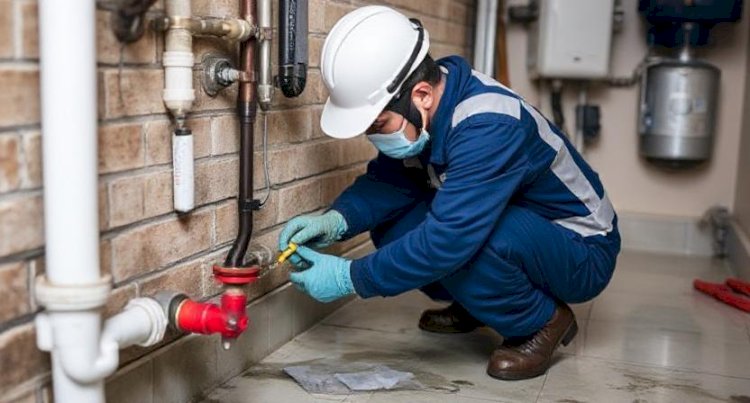Demystifying Wood Heaters: Understanding Their Functionality and Maintenance Needs
Wood heaters, also known as wood stoves, are self-contained appliances that use wood as fuel.

As a chill sneaks into the evening air, do you find yourself yearning for the type of warmth only a nice glowing heater can provide? Are you taken in by the charm of wood heaters but unsure of their functionality and maintenance? Or are you on the fence about installing one, unsure if the maintenance requirements would be too much of a burden? If you answered 'yes' to any of these questions, this comprehensive post is for you. In the paragraphs that follow, we will demystify wood heaters, explaining how they work, their pros and cons, and maintenance tips to keep them functioning optimally for years to come.
Wood heaters, with their rustic charm and cozy warmth, have long been homely icons in cooler climates. They offer a unique blend of aesthetics, utility, and carbon-neutral warmth to any house they grace. However, understanding their ins-and-outs can be a complex task - this is where this blog comes in.
From the intricacies of their design and operation, the benefits and challenges they present to the gritty details of maintaining them effectively - we will investigate every facet of this charming home improvement option. So, get comfortable and get ready for a deep dive into the world of wood heaters.
Understanding The Intricacies of Wood Heaters-
Wood heaters, also known as wood stoves, are self-contained appliances that use wood as fuel. They serve a dual purpose: decorating the house with their classic style while providing a renewable source of heat.
Unlike open fireplaces, which lose most of their heat up the chimney, wood heaters are designed to circulate and distribute warmth more uniformly. This is made possible through their unique build - consisting of dense metal and a controlled airflow system.
So, what makes them tick? Apart from wood and oxygen, the essential components of combustion, these heaters also need a steady draft to operate effectively. This typically enters through a bottom vent, circulates around the firebox, and exits through a flu or chimney, driving smoke and gases away from your home.
Pros and Cons of Wood Heaters-
Like any home improvement option, wood heaters come with their unique set of advantages and disadvantages. On the upside, they offer an efficient, renewable, and low-cost source of heat. The cozy ambiance created by their flickering flames and soft crackling is also hard to match.
Contrarily, wood heaters can be high-maintenance and demand attention and effort. Cleaning, replacing parts, and ensuring proper ventilation can be time-consuming. Furthermore, in comparison to electrical and gas heaters, wood stoves require space for wood storage and have a higher upfront cost.
Selecting The Right Wood For Your Heater-
Not all woods are created equal when it comes to burning in your wood heater. Hardwoods such as oak, ash, and maple burned hot and slow, providing long-lasting heat, and reducing the frequency of refuelling.
On the other hand, using softwoods like pine or cedar can lead to rapid burn and may produce less heat. Also important is using seasoned wood, as green or unseasoned wood would create more smoke and cause creosote buildup, posing a fire hazard.
Essential Maintenance for Your Wood Heater-
For your wood heater to function effectively and safely, regular maintenance is paramount. Red flags to watch out for include smoke leaks, an unusual smell, or difficulty in lightening.
Typically, yearly inspections by a professional are a must-have. Between inspections, it’s also crucial to clean your heater regularly, empty the ash pan often, and ensure the door seals are intact. Additionally, the flue must be swept annually to remove any creosote that may have accumulated.
Maximizing Your Wood Heater's Efficiency-
Even with the most efficient wood heater, its performance can be crippled through misuse. To get the most out of your heater, endeavour to only use seasoned wood, maintain a hot fire rather than a slow solder, and be diligent with cleaning and maintenance. A clean and well-maintained wood heater can produce far more heat, burn fuel more efficiently and offer safer operation.
Understanding The Environmental Impact of Wood Heaters-
Despite their charm and heat efficiency, it's important to note the environmental implications of wood heaters. While they can reduce dependency on non-renewable fuels, they can contribute to air pollution if not used correctly. Modern wood stoves, however, are designed to burn cleaner and meet stringent emission standards.
Conclusion: Do the benefits of a wood heater outweigh the effort?
Wood heaters are more than just aesthetically pleasing centrepieces; they are efficient, eco-friendly warmth sources that can bring a homely ambiance to your space. Yet, with their high-maintenance nature and potential air pollution concerns, they are not for everyone.
If you're willing to invest time in their upkeep and are conscious of the wood you burn, a wood heater can be a rewarding and cost-effective addition to your home. But remember, as with any home improvement investment, take time to analyze your needs, budget, lifestyle, and environmental impact before deciding. Through understanding and proper care, a wood heater can be far more than a beautiful adornment; it can become a sustainable and functional asset to your home.
Share
What's Your Reaction?
 Like
1
Like
1
 Dislike
1
Dislike
1
 Love
0
Love
0
 Funny
0
Funny
0
 Angry
0
Angry
0
 Sad
0
Sad
0
 Wow
0
Wow
0


















1
1